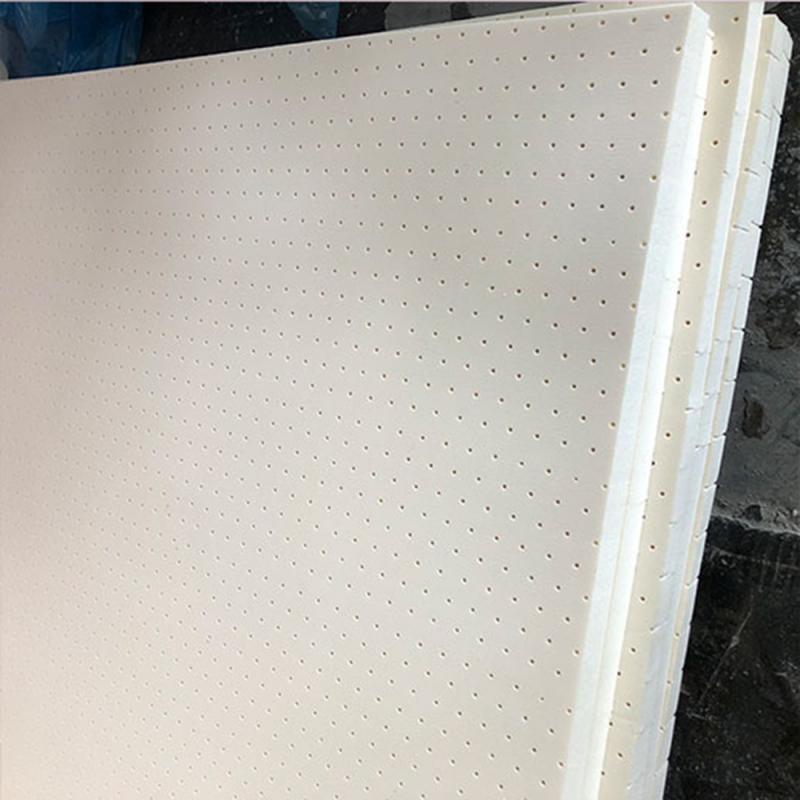Innovation in Protection: Latex Membrane Sheet Technology
Latex Membrane Sheets are innovative materials widely used across various industries for their exceptional properties and versatility. Essentially, these sheets are made from latex, a natural or synthetic rubber material known for its elasticity and durability. Engineered to provide a barrier against moisture and other environmental elements, the Latex Membrane Sheet has become indispensable in sectors such as construction, manufacturing, and healthcare.
Properties and Characteristics of Latex Membrane Sheet
Latex Membrane Sheet boasts a range of desirable properties, making them ideal for a multitude of applications:
1. Flexibility and Elasticity: Latex Membrane Sheet exhibit remarkable flexibility and elasticity, allowing them to conform to irregular surfaces and movements without compromising their integrity.
2. Waterproofing Capability: One of the primary features of it is their excellent waterproofing capability. They effectively prevent water penetration, making them invaluable for construction projects involving basements, roofs, and foundations.
3. Chemical Resistance: Latex Membrane Sheet demonstrates resistance to various chemicals, ensuring durability and longevity even in harsh industrial environments.
4. Adhesive Properties: These sheets often come with adhesive backing, facilitating easy installation and ensuring a strong bond to the substrate.
5. UV Resistance: Many it is formulated with UV inhibitors, offering protection against degradation caused by prolonged exposure to sunlight.

Applications of Latex Membrane Sheet
Latex Membrane Sheet finds widespread applications across diverse industries:
1. Construction: In the construction sector, the it is extensively used for waterproofing applications in basements, tunnels, roofs, and balconies. They provide an impermeable barrier against moisture, preventing water ingress and protecting the structural integrity of buildings.
2. Waterproofing of Basement Foundations: it is applied to the exterior walls of basement foundations to prevent groundwater seepage and moisture intrusion.
3. Roofing Systems: Latex Membrane Sheet serves as an effective waterproofing layer in flat and low-slope roofing systems, ensuring long-term protection against leaks and water damage.
4. Balcony and Terrace Waterproofing: These sheets are utilized to create a seamless and durable waterproofing membrane on balconies and terraces, safeguarding them from water penetration.
5. Manufacturing: Latex Membrane Sheet is employed in various manufacturing processes, particularly in industries where moisture or chemical resistance is crucial. They serve as protective barriers, gaskets, or seals in equipment and machinery.
6. Gasket Applications: Latex Membrane Sheet is used to manufacture gaskets for sealing joints and connections in piping systems, automotive engines, and industrial machinery, ensuring leak-free operation.
7. Healthcare: In the healthcare sector, the Latex Membrane Sheet is utilized for its hygienic properties and impermeability to fluids. They are commonly found in medical devices, equipment, and protective barriers.
8. Medical Equipment Enclosures: it is used to fabricate enclosures and covers for medical equipment such as ultrasound machines, MRI scanners, and incubators, providing a clean and sterile environment.
Advantages and Disadvantages of Latex Membrane Sheet
While Latex Membrane Sheet offers numerous advantages, they also have some limitations:
a. Advantages:
1. Cost-Effective: Latex Membrane Sheet offers a cost-effective solution for waterproofing and sealing applications compared to traditional methods.
2. Easy Installation: They can be easily applied using adhesive backing, reducing labor costs and installation time.
3. Versatility: it is compatible with various substrates and can be used in different environments.
b. Disadvantages:
1. Limited Temperature Range: Some Latex Membrane Sheet may has limitations in extreme temperature conditions, affecting their performance.
2. Not Suitable for All Surfaces: Certain surfaces may require preparation or priming before applying Latex Membrane Sheet to ensure proper adhesion.
3. Potential Allergies: Latex allergy is a concern for individuals sensitive to natural rubber latex, necessitating alternative materials in certain applications.
Latex Membrane Sheet in the Medical Industry
1. Role in Medical Equipment and Devices:
It is extensively used in the fabrication of medical equipment and devices due to their unique properties. They are employed to create protective enclosures and covers for sensitive instruments such as ultrasound machines, MRI scanners, and surgical equipment. By providing a barrier against contaminants and fluids, Latex Membrane Sheet helps safeguard the functionality and sterility of medical devices, ensuring optimal performance during patient care and treatment.
2. Importance in Hygiene and Infection Control:
In healthcare facilities, maintaining stringent hygiene and infection control measures is essential to prevent the spread of pathogens and protect patients and healthcare workers. Latex Membrane Sheet contributes significantly to these efforts by creating hygienic barriers that prevent the transmission of infectious agents. By effectively sealing and encapsulating medical equipment, these sheets help minimize the risk of cross-contamination and healthcare-associated infections (HAIs), thereby enhancing patient safety and reducing healthcare costs.
3. Compatibility with Medical-grade Standards and Regulations:
Manufacturers of Latex Membrane Sheet for medical applications adhere to stringent quality standards and regulations to ensure product safety and efficacy. These standards may include compliance with ISO 13485, which specifies requirements for the quality management system of medical device manufacturers, as well as regulations set forth by regulatory bodies such as the FDA (Food and Drug Administration) in the United States and the CE (Conformité Européenne) marking in the European Union. By meeting these standards, the it is certified for use in medical environments, providing healthcare professionals with confidence in their performance and reliability.
Environmental Impact and Sustainability of Latex Membrane Sheet
1. Examination of the Environmental Footprint:
The production and disposal of Latex Membrane Sheet can has significant environmental implications, including energy consumption, emissions, and waste generation. It is essential to conduct a comprehensive assessment of the environmental footprint of these sheets to identify areas for improvement and implement sustainable practices throughout the product lifecycle.
2. Recycling Options and Eco-friendly Alternatives:
To mitigate environmental impact, manufacturers are exploring recycling options for Latex Membrane Sheet. Recycling initiatives may involve collecting used sheets, processing them into raw materials, and incorporating recycled content into new products. Additionally, there is growing interest in developing eco-friendly alternatives to traditional Latex Membrane Sheet, such as biodegradable materials derived from renewable sources. These alternatives offer comparable performance while minimizing environmental harm and reducing reliance on finite resources.
3. Sustainable Practices in Latex Production and Disposal:
In addition to recycling initiatives, adopting sustainable practices in latex production and disposal is essential for minimizing environmental impact. This includes optimizing manufacturing processes to reduce energy consumption, emissions, and waste generation. Furthermore, implementing responsible disposal methods, such as incineration with energy recovery or composting, can help mitigate the environmental burden associated with end-of-life Latex Membrane Sheet.
Tips for Choosing and Installing Latex Membrane Sheet
1. Application Requirements: Assess the specific requirements of the application, including the desired level of waterproofing, chemical resistance, and compatibility with substrates.
2. Quality and Certification: Choose Latex Membrane Sheet from reputable manufacturers that adhere to quality standards and regulatory requirements for medical-grade applications.
3. Environmental Considerations: Consider the environmental impact of the product, including its recyclability, biodegradability, and sustainability credentials.
Conclusion
In conclusion, Latex Membrane Sheet offers a versatile and effective solution for waterproofing, sealing, and protective applications across multiple industries. With their unique properties such as flexibility, waterproofing capability, and chemical resistance, they play a vital role in ensuring the integrity and longevity of structures, equipment, and devices. While they have distinct advantages, it’s essential to consider their limitations and suitability for specific requirements. Overall, Latex Membrane sheets manufactured by companies like Jiangsu Hengyuan Householding Co., Ltd., continue to be a preferred choice for professionals seeking reliable and cost-effective solutions for moisture management and environmental protection.

